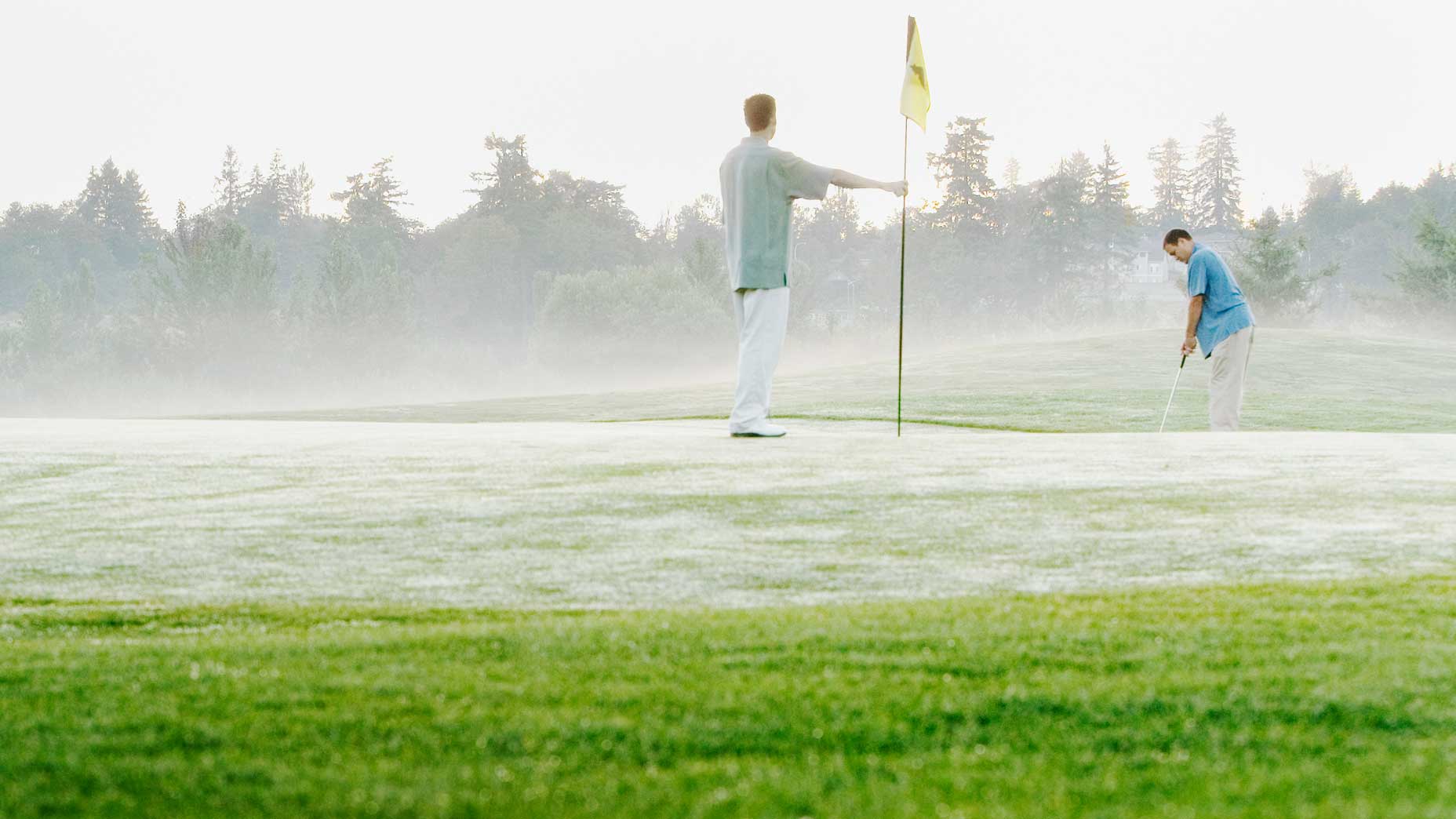As the spring arrives, so, too, does the rainy weather. While a little water might not keep most golfers from playing a round, it does present some challenges, as soggy grass can lead to more difficult courses. And one area many golfers may struggle with is putting on wet greens.
I live in Seattle, so putting on wet greens has become a common occurrence in every round I play between January and April. Still, even with lots of experience, playing on wet grass is always difficult to adjust to. After all, it’s not as if I can just duplicate this year-round while I work on my short game.
Sometimes, the grass is just a morning dew. Other times, it’s completely washed out. No matter the amount of water on a green, though, players need to understand how to adapt.
The secret to putting on wet greens
While there isn’t a one-size-fits-all fix when it comes to putting on wet greens, there are some basic tips to seeing success. In hopes of revealing some secrets, I reached out to two GOLF Top 100 Teachers — Jim Murphy and Mark Durland — both of whom provided their own expert-level advice.
1. Are there any mechanical issues golfers should change when playing on wet greens?
When it comes to mechanics while putting on wet greens, Murphy says it’s important to stay the course, while understanding that the putting surface will be much slower than dry greens.
Says Murphy, “Wet greens, because they are holding moisture, are going to be slower in speed. Adjust your speed, but not your mechanics. This can be done on the practice putting green before the round. Hit a couple strokes with your 10-foot stroke and see how far they actually go on the wet green. If it only goes 9 feet, adjust accordingly.”
Durland agrees, adding that “the greens will be slower, so a little wider stance and a stroke with more wrist hinge can provide a much-needed power source.”
2. If a golfer has a 6-foot downhill putt, how hard should they hit the ball on a wet green?
The biggest factors here are how wet the putting green is, and what the slope of the green is. Each of the Top 100 Teachers mentioned this in their reply.
Durland said, “This is a tough one to quantify because it really depends on how wet the greens are and how downhill the putt is; but you’ll definitely need more [strength].
“Here’s a great tip: I’d find a 6-foot downhill putt on the practice green and get a number in my head before I start the round: 2%, 5%, whatever the feel is for that day and that golf course.”
Adds Murphy, “Normally, a downhill putt is going to run faster than a flat put. But when conditions are wet, depending on how much slope [the green has], it’s probably just like a flat 6-footer.”
3. Is it recommended to aim for the low side or the high side of the hole on wet greens?
While putting, most golfers want to keep the ball on the high side of the hole no matter what the conditions look like. However, this can be difficult for many amateurs, who often don’t play enough break on their putts.
According to Murphy, staying on the high side while putting on wet greens is important, but players may find that the ball doesn’t break as much. He says, “On wet greens, because they are rolling slower, they will tend to break less than on faster greens.”
Durland agrees with Murphy, adding, “I’d always encourage aiming to the high side of the hole, as we always want the ball moving toward the target, not away from it. Because the green will be slower, you may not have to aim as high, but still favor the high side.”
4. What is the most important tip for amateurs faced with a wet green?
Wet conditions can throw all sorts of factors into a round. Not only will there by water and mud, but, when it comes to putting, both the golf ball and putter will gather moisture, grass clippings, and other debris. This is where Durland reminds players to stock up on towels prior to a round, which can make all the difference on the scorecard.
Says Durland, “Towels, towels, and more towels! If you are playing on wet greens, most likely, you are playing in all-around wet conditions. You can never have too many dry towels!”
“Make sure your golf ball and putter are free of debris before each stroke. If you find old footage of Tiger putting in wet conditions, he’d give one last wipe of the putter blade on his rain suit pants before striking the putt, just to make sure it was clean.”
5. Durland’s favorite tip for putting on wet greens
To see more success on wet putting surfaces, Durland says to “calibrate your stroke for wet conditions” on the practice green prior to playing a soggy round.
“Take four golf balls to the wet practice green before your round. Find a flat part of the practice green. Make a heel-to-heel stroke, a foot-to-foot stroke, an outside foot to outside foot stroke, and a way outside foot to way outside foot stroke.”
“Pace them off for distance, and write them on either the scorecard or the notes in your phone. Quantify them as small, medium, large, and extra-large. As you approach your putts for the day, just ask if it’s a small, medium, large, or extra-large putt.”
